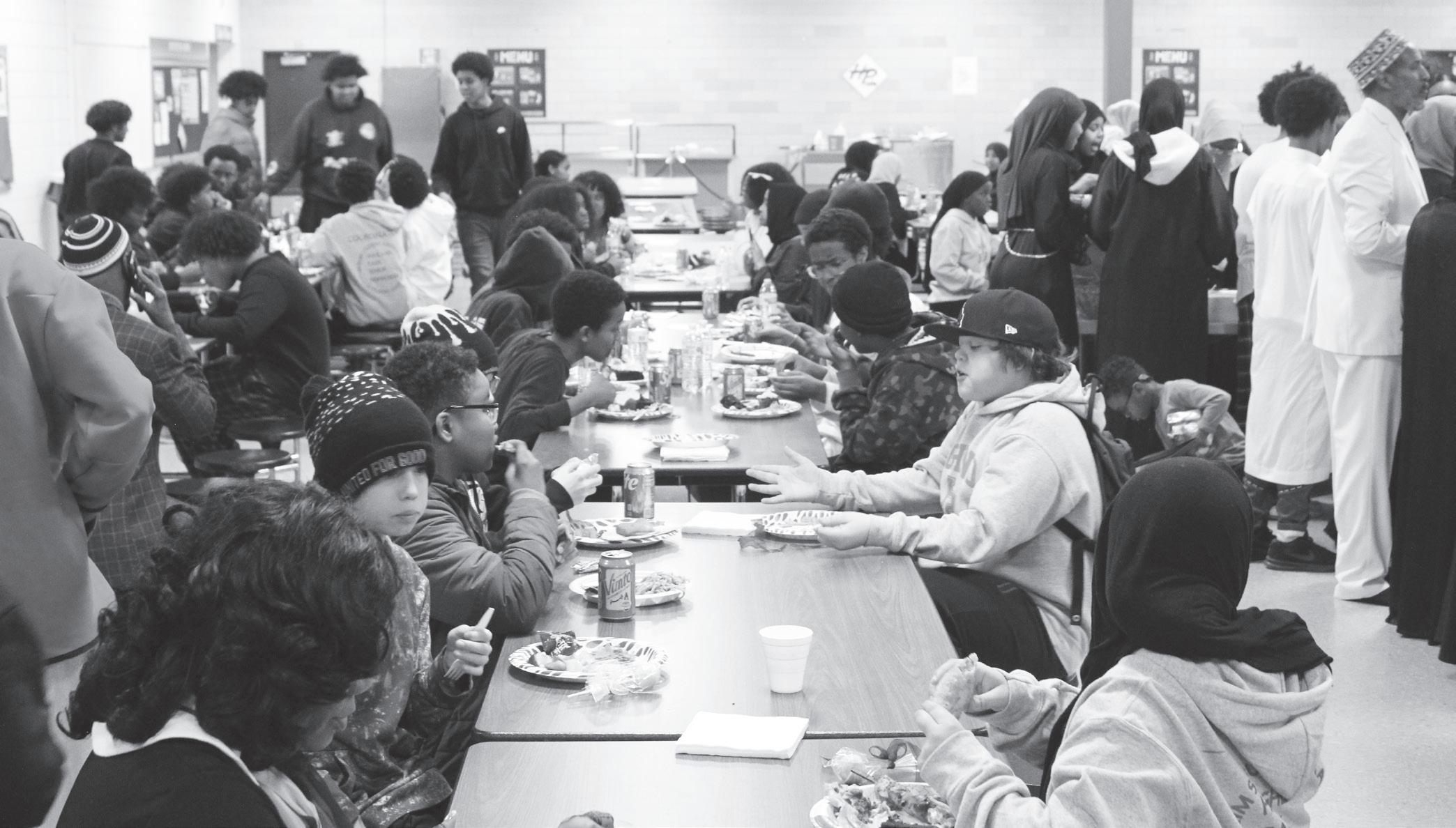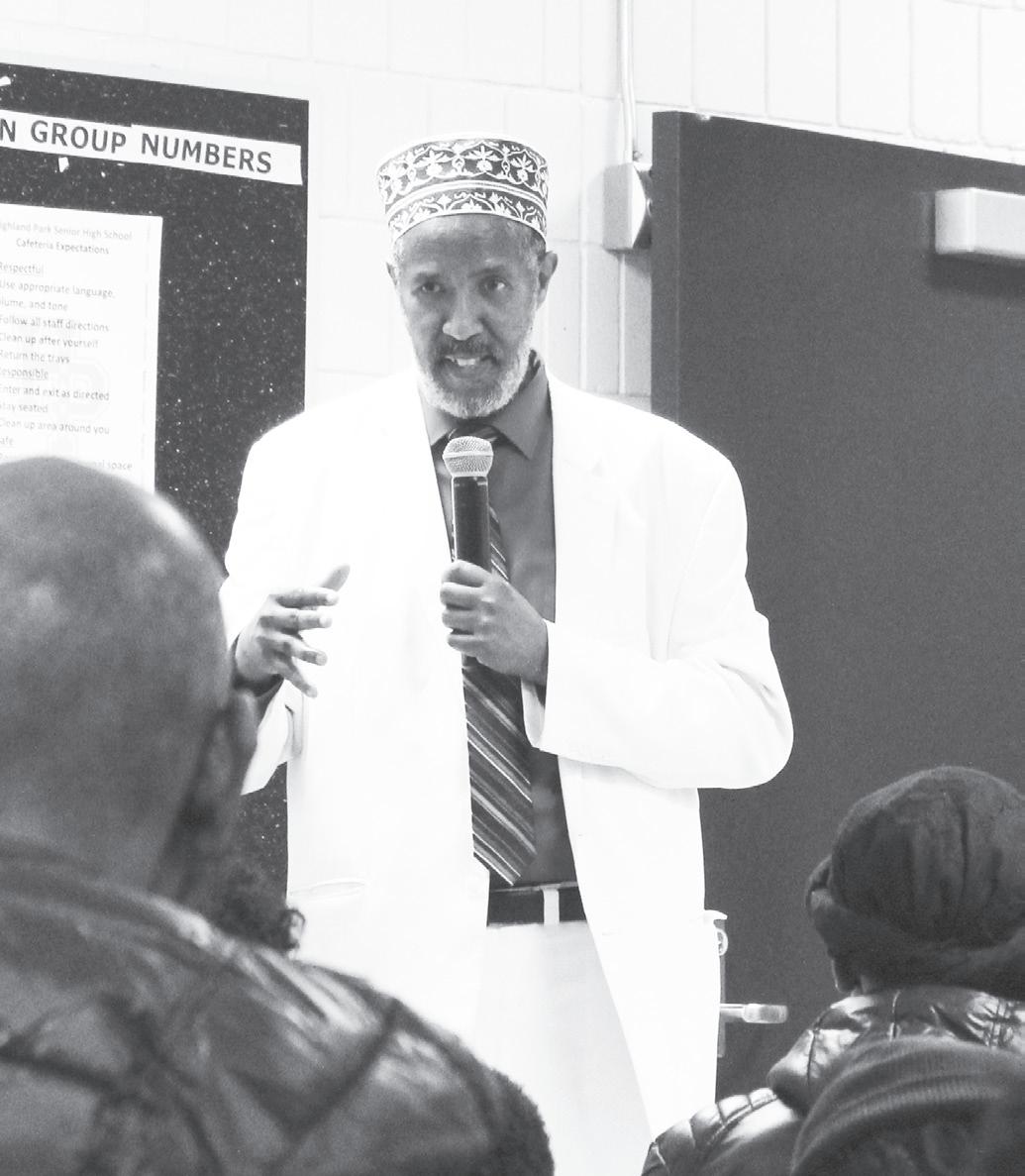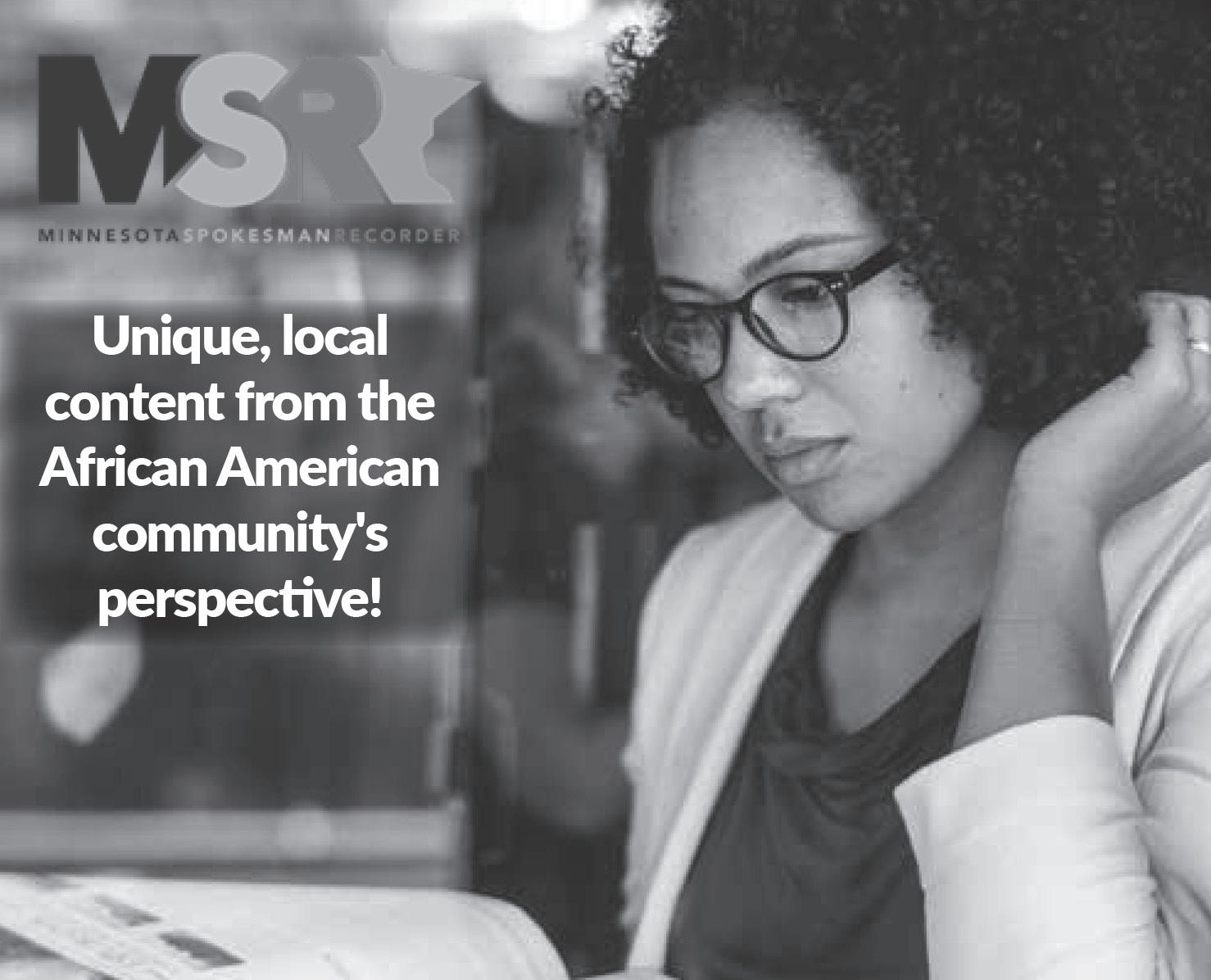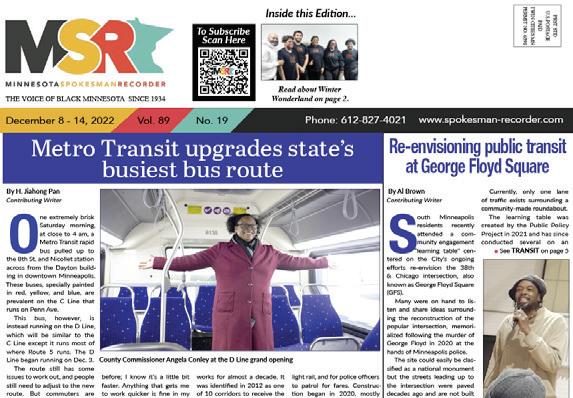
4 minute read
Ramadan: the fast and the feast St. Paul’s Highland Park High School celebrated iftar during Ramadan
By Abdi Mohamed
Contributing Writer
On Friday, April 21, several Minnesota school districts—Saint Paul, Minneapolis, Mankato, Hopkins, and Moorhead—will mark the end of Ramadan, by celebrating the Eid al-Fitr holiday with no classes. While celebrating Eid al-Fitr is a first for some school districts, students at Highland Park Senior High School in St. Paul celebrated Ramadan this month with an iftar—the meal in which Muslims break their fast at sundown. The event was organized by the school’s Muslim Student Association (MSA), and was held on March 27, the first time in the district’s history that it hosted an iftar event, through coordination with parents who participated in the potluck which included food sponsored by a local caterer, Holy Land.

Ramadan—the ninth month in the Islamic calendar—is the period in which Muslims abstain from eating or drinking from sunup to sundown. It began on the evening of March 22, and ends on April 20. During this time, Muslims around the world break their fasts in the evening, often with family and attend prayer at their local mosques.
Asma Sedik and Hana Elmi are the co-presidents of Highland Park’s MSA, and joined the group because it was a safe space for them to be themselves and connect with other students who shared their background. Sedik is a sophomore and has been with MSA for two years. Elmi, a junior, has been with the group for a year. The two had been planning the details of the event since December, however the idea originated last Ramadan when students originally wanted to host an iftar, but encountered some logistical issues.
“Well, the idea for the iftar came up last year. But we talked about it, and we realized we couldn’t really do it,” Sedik said. “Iftar at that time last year was around like eight o’clock or something, and we can’t stay in the school building that long.”
“As a Muslim woman, especially in a predominantly White school I felt as though MSA was a safe space. As a hijabi [a woman who wears the head covering] also, that’s the first thing you see about me is my religion,” Elmi said. “I just really wanted to be a part of it and show that we’re here and that we’re represented.”
Over the past year, MSA saw its membership grow with more students showing interest in joining and willing to volunteer. This proved helpful as the event-planning required students to help fundraise over several months leading up to Ramadan.
The group came up with a few different ways of raising money, mainly hosting tail-
Leading up to the event, the MSA posted flyers around the school, visited classrooms to speak to students directly about the iftar and answer questions about Ramadan generally, posted frequently to social media, and even aired programming on the morning announcements.
On the day of the event, students, staff, and family members gathered in one part of the cafeteria as they awaited iftar. Games and more to wash their meal down, as people went back for seconds and thirds, as well as desserts.
“I was really happy with the number of people that were there. A lot of parents came and were really happy about the event. They wanted their kids to join MSA,” Sedik said. “I had a lot of people tell me we should have another one this year, which I said probably won’t happen cause that’s a lot to plan.”
Just the beginning?
Robyn Strowder is a behavioral intervention specialist at Highland Park and the MSA’s staff advisor. She believes that this event is the beginning of something long-lasting.
Muslim, much of her family practices Islam. She also shares their group.
“Ms. Robyn is the best teach- gates where they would sell cultural foods such as sambusas to students and their families. The work leading up to the iftar proved to be a learning opportunity for the group’s leadership team.
“We had to learn a lot about activities were set up for students to spend time with one another. Parents chatted with one another as they looked on and pointed out their children to one another, inquiring as to how their Ramadan has been going so far.
“I think it was a learning time this year for a lot of staff,” she said. “I kept calling this our first annual iftar event because in my mind I’m like, this is something that’s gonna grow.” Strowder has been with the district for seven years, five of which she worked at Highland Park. She was approached by MSA students last year who had requested that she be an immigrant background like many of her students and grew up in St. Paul.

“My family’s mixed reli er that anybody could ask for. Even outside of MSA her room is always a safe space for everybody,” Elmi said. “She’s gave us a lot of the funding,” organizing, making an itinerary and sticking to it and finding different people to help us make it possible, and money management,” Sedik said.

The two locked in a sponsor with the owner of Holy Land, Majdi Wadi, after receiving some support from Dr. Abdisalam Adam, an assistant principal at Highland Senior High, who is a friend of Wadi’s.
Activity and information booths lined the walls of one side of the cafeteria where individuals could go to learn more about Islam or wait in line to get henna designs on their hands and arms. Macaro ni and cheese, lasagna, sambu sas, hummus, pizza, and more were served. Chai tea, juice, and vimto were available for those who needed somthing
By Dr. Dionne Hart

Guest Contributor

This article will dispel common misconceptions about Black mental health care and inform the community about mental health disorders and treatment.

A mass shooting is defined as having four or more victims killed or wounded. In 2023, there have been more than 130 mass shootings so far. Following a mass shooting, thoughts and prayers are often followed by a plea to increase support for individuals with mental illness. Only three to five percent of violent acts in the community are attributed to people with a mental illness.
Fact #1
The majority of the estimated 58 million people in the United States living with mental illness are never violent. People living with mental health disorders are more likely to be crime victims.
Public messages linking violence and mental illness are stigmatizing and discourage people living with a mental health disorder from seeking treatment. Further, in the media, people











